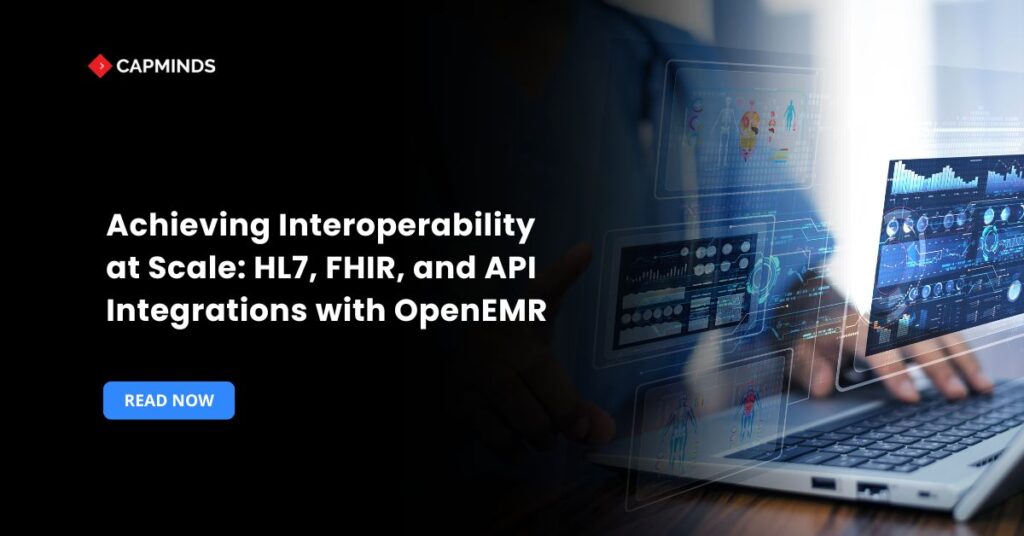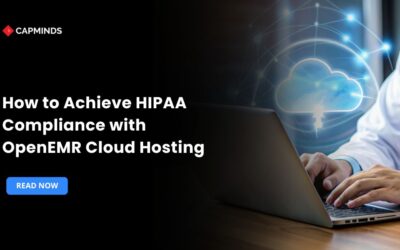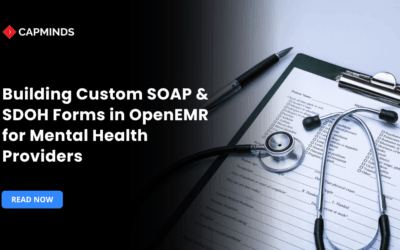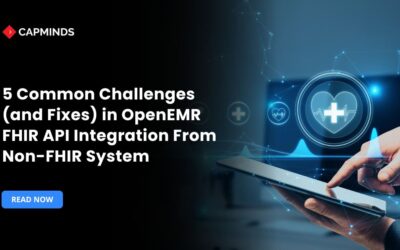Achieving Interoperability at Scale: HL7, FHIR, and API Integrations with OpenEMR
Healthcare systems require greater interoperability across many platforms and providers. OpenEMR stands out due to its open-source flexibility, which delivers smooth data exchange at scale. This necessitates the strategic application of modern standards, such as HL7 and FHIR, along with reliable APIs.
In this blog, you’ll learn the best practices for integrating HL7 and FHIR protocols with OpenEMR, as well as how to achieve a scalable interoperability framework that supports compliance, security, and performance.
Why Interoperability Matters in Healthcare
Interoperability ensures that patient data flows smoothly across EHRs, labs, pharmacies, and other systems supporting coordinated care, reducing duplication, and improving outcomes.
- Continuity of Care: Effective data exchange among hospitals, specialists, and primary care providers enhances diagnosis and minimizes medical errors.
- Regulatory Compliance: US laws such as the 21st Century Cures Act require public access to electronic health data.
- Patient Empowerment: Individuals obtain their medical records, encouraging self-management and involvement.
- Operational Efficiency: Integrated systems enhance workflows, invoicing, referrals, and reporting throughout organizations.
Key Interoperability Standards
1. HL7 v2 & v3
HL7 v2 is a widely used communications standard for structured data, including ADT (patient admissions), ORU for lab results. It communicates via segment-based text messages such as MSH, PID, and OBR. While adaptable, this versatility causes diversity in implementations, needing robust transform and parser systems.
HL7 v3 and CDA/C-CDA use XML-based structures and clinical documents, which give better semantic clarity but at the cost of increased complexity and poorer adoption compared to version 2.
2. Faster Healthcare Interoperability Resources
FHIR is the modern data exchange standard.
- RESTful APIs employ JSON/XML for quick web-based communication.
- Highly granular data structure resources such as patient, encounter, and observation.
- Supports applications, mobile integration, and patient portals.
Benefits
- Friendly to developers
- Lightweight and scalable
- Perfect for patient access, mobile health, and cloud interoperability
OpenEMR and Interoperability – What’s Built-in?
- OpenEMR’s internal interface allows v2 messages for ADT, lab orders, and results; however, complicated workflows frequently require extra middleware.
- Since version 7, OpenEMR has had a RESTful FHIR R4 service with Swagger-driven documentation.
- In addition to FHIR, OpenEMR has classic REST endpoints for patients, encounters, billing, and so on.
C-CDA creation is available through modules for document-based data interchange, which is necessary for referrals or HIE feeds.
Related: HL7 FHIR Bulk Data Access: Setting a New Standard for UDS Reporting
How to Build Scalable Interoperability with OpenEMR
1. Develop an Integration Strategy
- Define your objectives, like data exchange, care coordination, and patient data access.
- Identify the stakeholders, such as IT, compliance, clinical, and operations.
- Choose integration partners such as laboratories, HIEs, other EHRs, and billing systems.
2. Leverage FHIR for External Access
- Use OpenEMR’s RESTful APIs or extend FHIR support using modules like openemr-fhir-server.
- Secure endpoints using OAuth2 and scopes to control access.
- Integrate with SMART on FHIR apps to improve features such as medication reminders and care planning.
3. Implement HL7 Interfaces for Legacy Systems
- Use Mirth Connect as a middleware engine.
- Build HL7 channels to receive/send messages (ADT, ORU, SIU, etc.)
- Create transformation scripts for mapping HL7 segments to OpenEMR fields.
4. Enable Bidirectional API Integrations
- Create a two-way data sync for billing systems such as clearinghouses, utilizing REST APIs.
- Sync encounters data, insurance claims, remittances, and payment information.
- Conduct audit trails regularly and ensure transactional integrity.
5. Cloud Infrastructure to Scale
- Host OpenEMR on HIPAA-compliant cloud platforms such as AWS, Azure, and GCP.
- Utilize containers like Docker/Kubernetes for modular deployments.
- Enable load balancing and failover functionality to handle huge transaction volumes.
Security and Compliance
- Ensure HIPAA compliance for data storage and transit.
- Implement role-based access controls for APIs and interfaces.
- Use encryption protocols TLS 1.2 or above for any external communication.
- Manage audit logs and breach notification workflows.
Key Use Cases for OpenEMR Interoperability
- Lab connections include ADT and ORU communications over HL7 for faster result transmission.
- Referral networks include CCD/C-CDA for document sharing and FHIR for dynamic consultations.
- Smart monitoring with FHIR observations like chronic care apps.
- SMART on FHIR or bespoke applications allow users to view their information.
- HIE participation includes support for both HL7 and FHIR interfaces.
- Complete financial cycle using REST and secure APIs.
Related: HL7 FHIR vs. Traditional Data Standards: Why Interoperability Matters
CapMinds HL7 FHIR Service for Healthcare Practice
CapMinds offers the best all-in-one health interoperability solution for healthcare practices. Our HL7 FHIR service will understand your clinical needs and requirements to cater to our solution.
We have years of experience in this field, faced many challenges, and tackled them with ease. Why can CapMinds be your Go-to Interoperability Solution?
- We are experienced professionals with years of experience in the field.
- Our technical team is an expert that will analyze your healthcare practice thoroughly to tailor the Interoperability solution.
- We prioritize safety, security, encryption, and authentication to protect your healthcare practice’s patient data.
- Our comprehensive solution ensures seamless interoperability, adhering to industry standards and using standard protocols.
- We offer comprehensive training sessions to healthcare staff.
- Our affordable health interoperability solution benefits healthcare practices at all levels.
If you are searching for the best interoperability service for your practice, CapMinds is your choice. We can assist you by navigating all potential challenges and ensuring seamless health data exchange.
Reach out to CapMinds Health Data Exchange Solutions for your Healthcare Practice.




